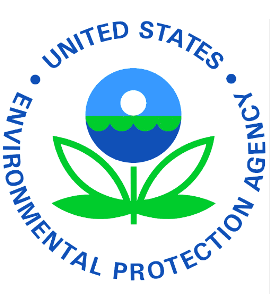Biden administration announces new cleanup projects
New cleanups planned at 22 Superfund sites

LENEXA, KAN. (FEB. 10, 2023) – The U.S. Environmental Protection Agency (EPA) has announced the second wave of approximately $1 billion in funding from President Biden’s Bipartisan Infrastructure Law to start new cleanup projects at 22 Superfund sites, including the Valley Park TCE Site in Valley Park, Missouri, and to expedite over 100 other ongoing cleanups across the country.
Another project sites to be cleaned up, thanks to the Bipartisan Infrastructure Law include the Caney Residential Yard in Caney, Kansas.
Historically, two smelters were located and operated in Caney, Kansas from approximately 1904 to 1922. The American Zinc, Lead and Smelting (AZLS) Company Smelter operated in Caney at the site of the current high school building. The Owens Zinc Company (OZC) operated in Caney between 1915 and 1931. Caney, Kansas also had two separate brick manufacturing plants during the same timeframe as the smelter operations. Smelter deposition and manual reloaction of waste resulted in contaminated properties within the city of Caney.
To date, the EPA has sampled 1,041 residential properties in Caney, Kansas, with 344 qualifying for and completed remediation of the yard due to lead contamination in the soil greater than 400 parts per million.
Other sites in Kansas include the 57th and North Broadway Street site in Wichita and the Plating, Inc. site in Great Bend.
Thousands of contaminated sites exist nationally due to hazardous waste being dumped, left out in the open, or otherwise improperly managed, including in manufacturing facilities, processing plants, landfills, and mining sites. Superfund cleanups help transform contaminated properties and create jobs in overburdened communities, while repurposing these sites for a wide range of uses, including public parks, retail businesses, office space, residences, warehouses, and solar power generation. In addition, these sites can support natural areas, parks, and recreation facilities, providing greenspace and safe places for families to play outside.
“Thanks to President Biden’s historic investments in America, we are moving faster than ever before to progress cleanup at contaminated sites – from manufacturing facilities to landfills – in communities across the country,” said EPA Administrator Michael S. Regan.
“This funding from the Bipartisan Infrastructure Law enables crews in our Region to begin new construction at Valley Park,” said EPA Region 7 Administrator Meg McCollister. “Cleaning up sites throughout Region 7 helps ensure that we continue to protect the environment and the health of residents in our nation’s heartland.”
Valley Park TCE, a Superfund site located in the eastern portion of Valley Park, consists of two source areas – the former Wainwright Industries and current Valley Technologies properties – and two contaminated groundwater plumes within the Meramec River alluvial aquifer.
The $1 billion investment is the second wave of funding from the $3.5 billion allocated for Superfund cleanup work in the Bipartisan Infrastructure Law. With the first wave of funding announced in December 2021, EPA deployed over $1 billion for cleanup activities at over 100 Superfund National Priorities List sites across the country.
Thanks to this historic funding, EPA started 81 new cleanup projects in 2022, including projects at 44 sites previously on the backlog. By starting four times as many construction projects as the year before, EPA is aggressively bringing more sites across the country closer to finishing cleanup. For example, in Evansville, Indiana, EPA continued to reduce exposures to lead and arsenic in soil in the neighborhoods of the Jacobsville Neighborhood Contamination Site by starting the next phase of cleaning up contaminated residential soils.
Background
In 1980, Congress passed the Comprehensive Environmental Response, Compensation and Liability Act, known as Superfund. This law gave EPA the authority and funds to hold polluters accountable for cleaning up the most contaminated sites across the country. When no viable responsible party is found or cannot afford the cleanup, EPA steps in to address risks to human health and the environment using funds appropriated by Congress, like the funding provided by the Bipartisan Infrastructure Law.
Read more about each Superfund site.



